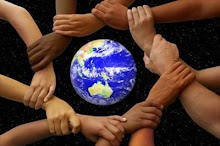Cultural identity refers to one's sense of belonging to a particular culture or ethnic group.
Almost like how do I know I am an African American without taking my skin color into
Social identity develops as a consequence of memberships in particular groups within one's culture.
Personal Identity is based on people's unique characteristics, which may dif- fer from those of others in their cultural and social groups.
During the Unexamined Cultural Identity stage, one's cultural characteristics are taken for granted, and consequently there is little interest in exploring cultural issues.
Cultural Identity Search involves a process of exploration and questioning about one's culture in order to learn more about it and to understand the implications of membership in that culture.
It is quite common for people to draw on their personal experiences to understand and evaluate the motivations of others. This common human tendency is sometimes called Ethnocentrism
Information processing results in a simplification of the world, so that prior experiences are used as the basis for determining both the categories and the attributes of the events. This process is called Stereotyping.
Ethnocentrism
Cultures also train their members to use the categories of their own cultural experiences when judging the experiences of people from other cultures. Our culture tells us that the way we were taught to behave is "right" or correct," and those who do things differently are wrong.
Prejudice
Prejudice- refers to negative attitudes toward other people that are based on faulty and inflexible stereotypes. Prejudiced attitudes include irrational feelings of dislike and even hatred for certain groups, biased perceptions and beliefs about the group members that are not based on direct experiences and firsthand knowledge, and a readiness to behave in negative and unjust ways toward members of the group.
Whereas prejudice refers to people's attitudes or mental representations, the term Discrimination refers to the behavioral manifestations of that prejudice.
Racism
Robert Blauner has described racism as a tendency to categorize people who are culturally different in terms of their physical traits, such as skin color, hair color and texture, fucial structure, and eye shape.
Dalmas Taylor offers a related approach that focuses on the behavioral components of racism. Taylor defines racism as the cumulative effects of individuals, institutions, and cultures that result in the oppression of ethnic minorities. Taylor's approach is useful in that it recognizes that racism can occur at three dis- tinct levels: individual, institutional, and cultural.
At the cultural level racism denies the existence of the culture of a particular group.
Symbolic racism, which is sometimes called mafern racism, is rurrently prevalent in the United States. In symbolic racism, members of a group with political and economic power believe that members ofsome other group threaten their traditional values. such as individu- alism and self-reliance. Fears that the outgroup will achieve economic or social success, with a simultaneous loss ofeconomic or social status by the ingroup, typify this form of racism.
Tokenism as a form of racism occurs when individuals do not perceive themselves as prejudiced because they make small concessions to, while holding basically negative attitudes toward, members of the other group.
Genuine likes and dislikes may also operate as a form of racism. The cultural prac- tices of some groups of people can form the basis for a prejudicial attitude simply because the group displays behaviors that another group does not like.
The least alarming form of racism, and certainly one that everyone has experi- enced, is based on the Degree Of Unfamiliarity with members of other groups. Simply re- sponding to unfamiliar people may create negative attitudes because of a lack of experience with the characteristics of their group.
























